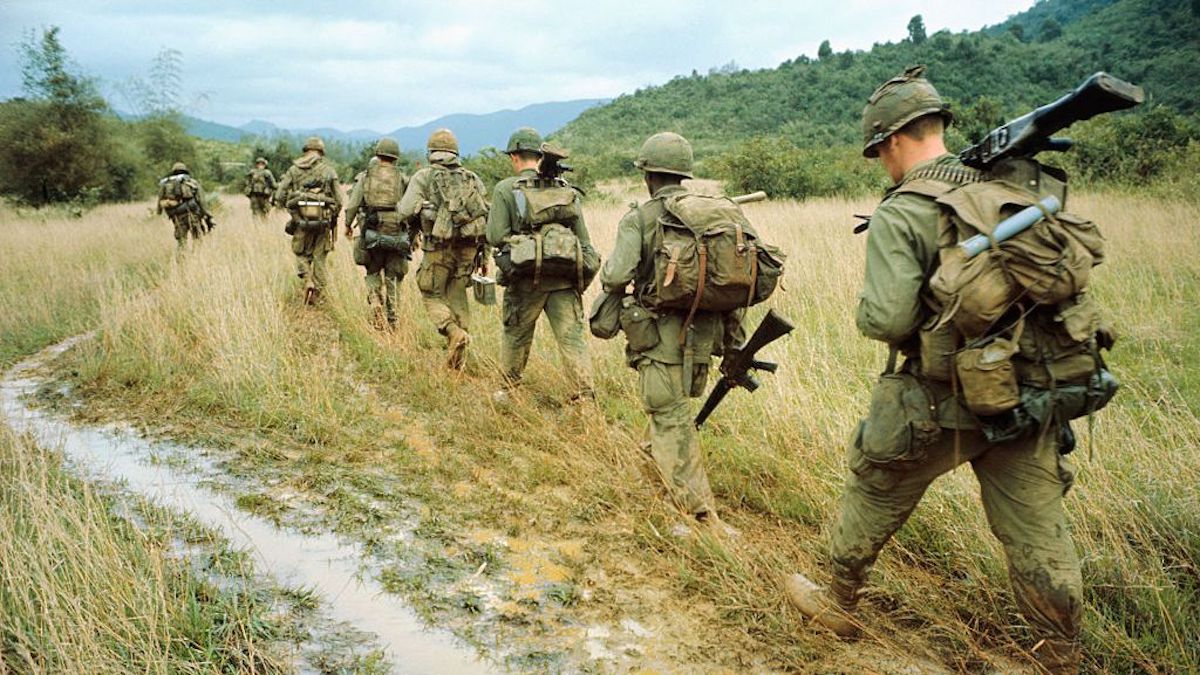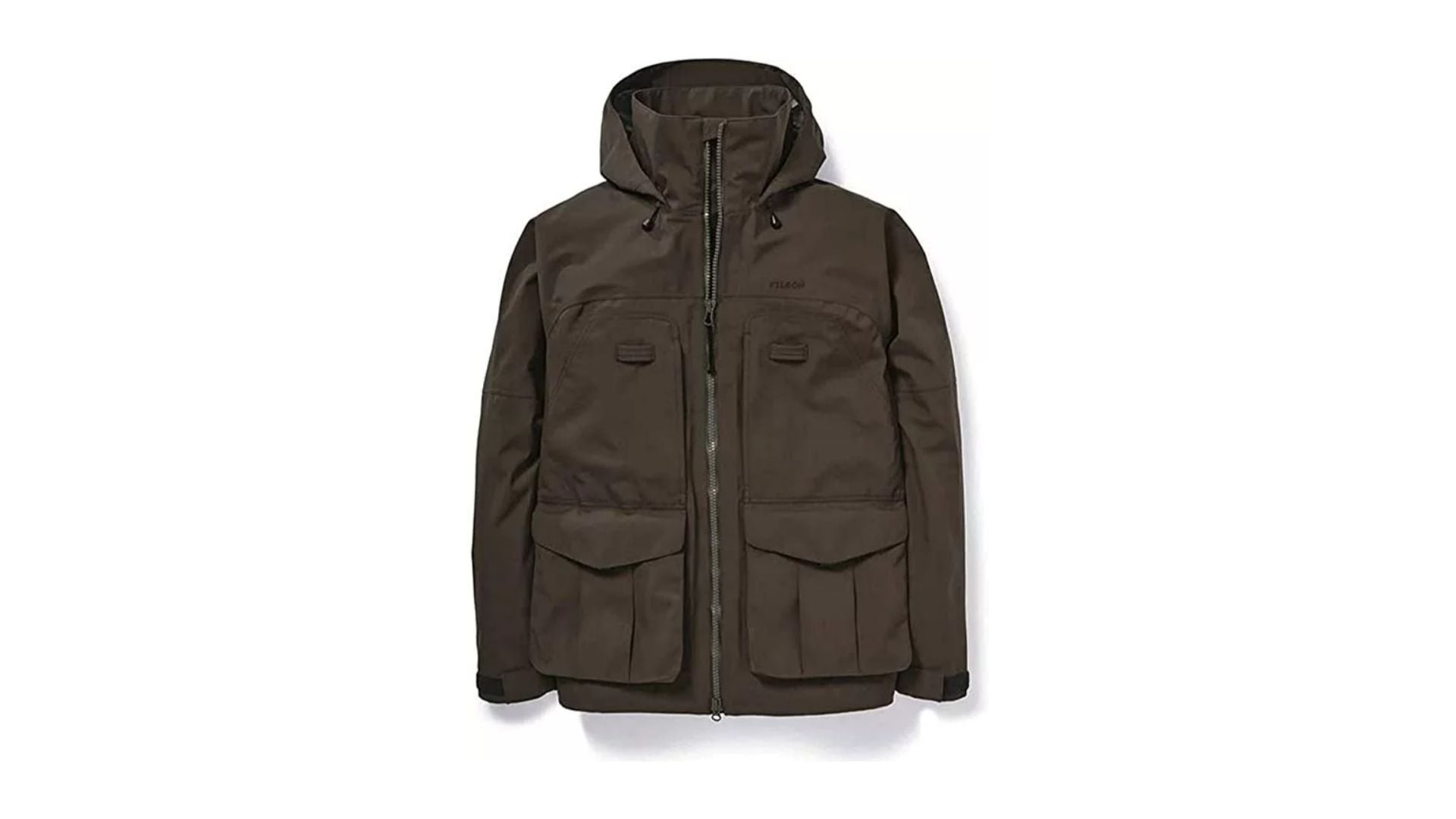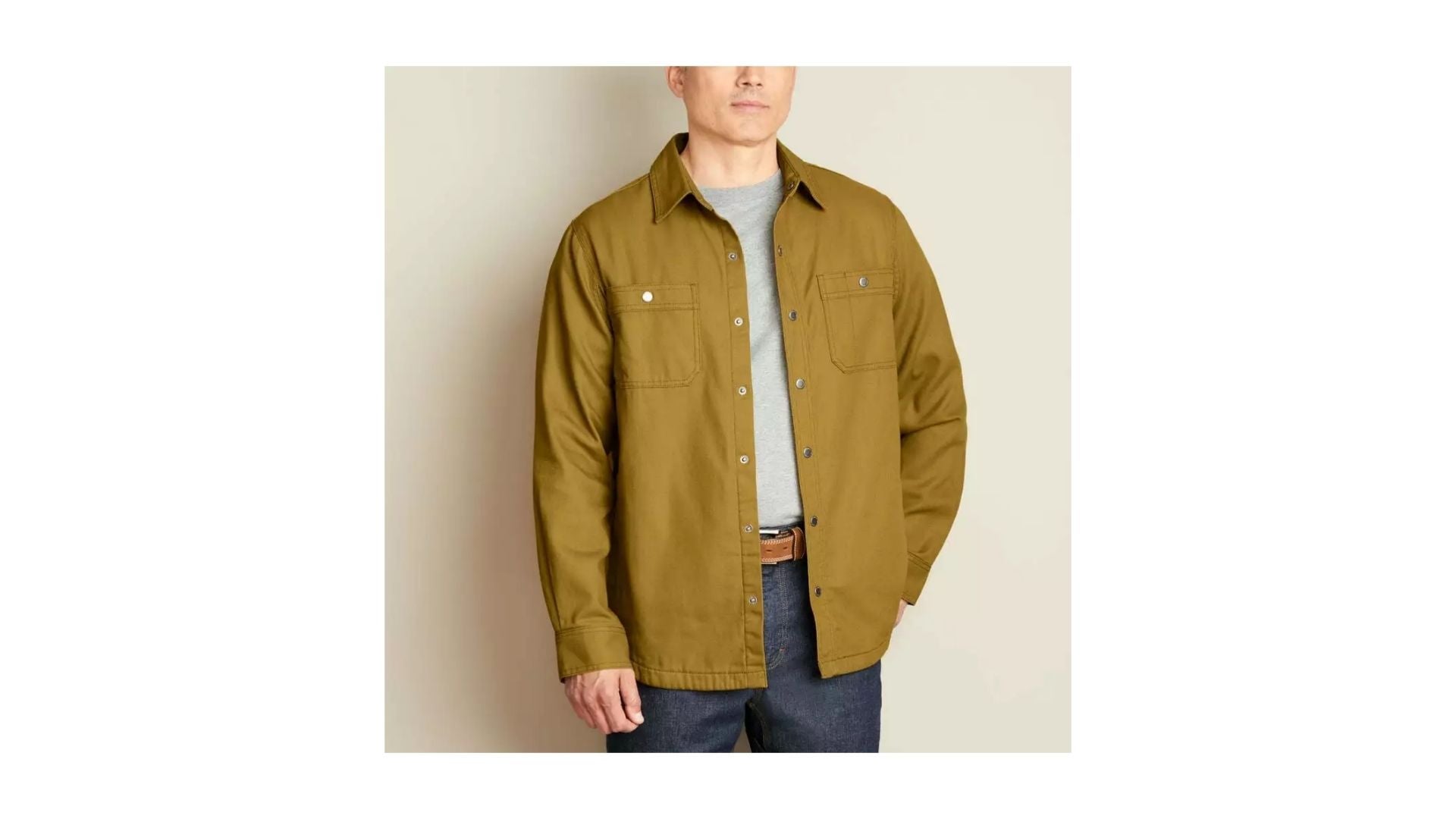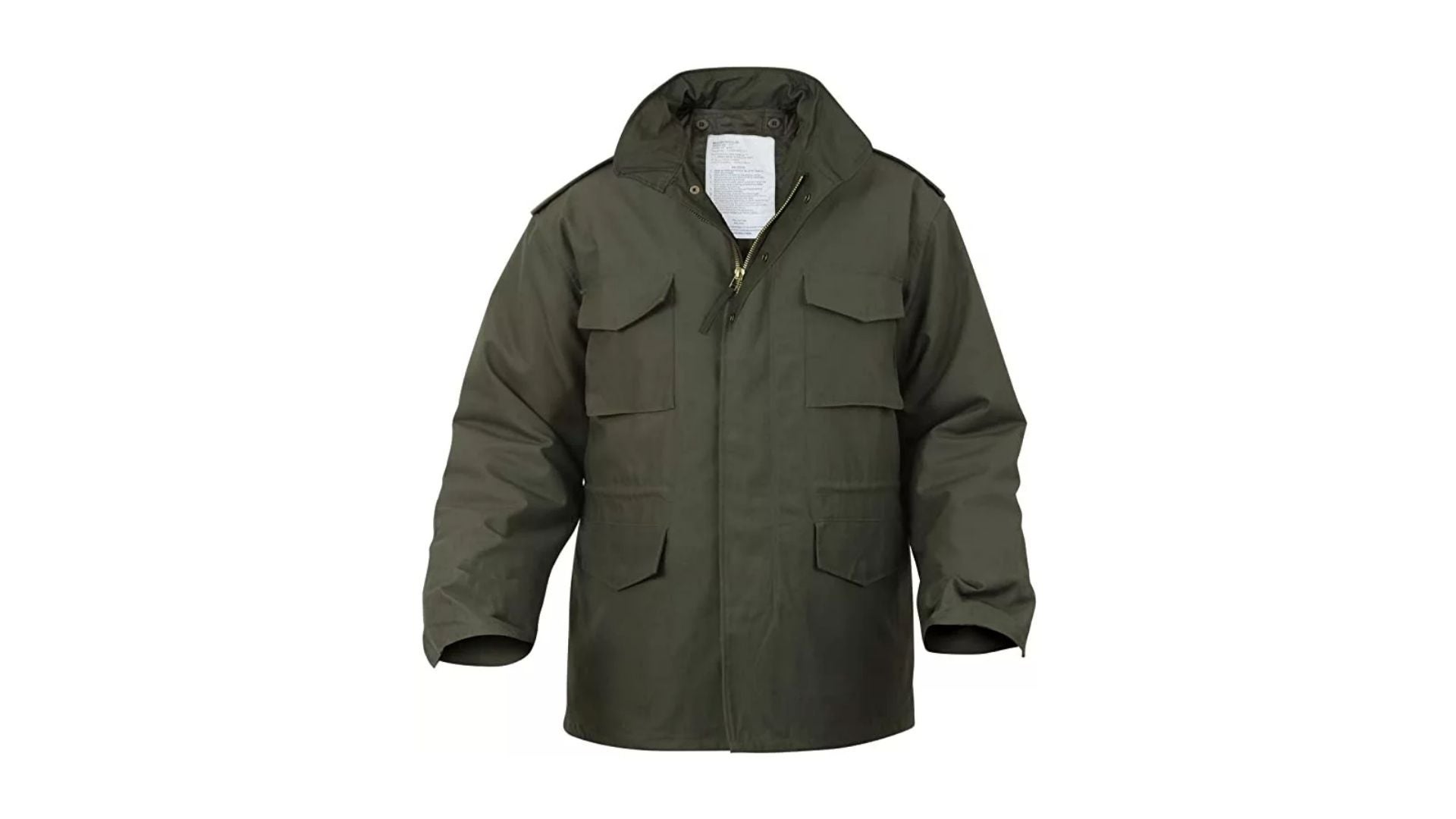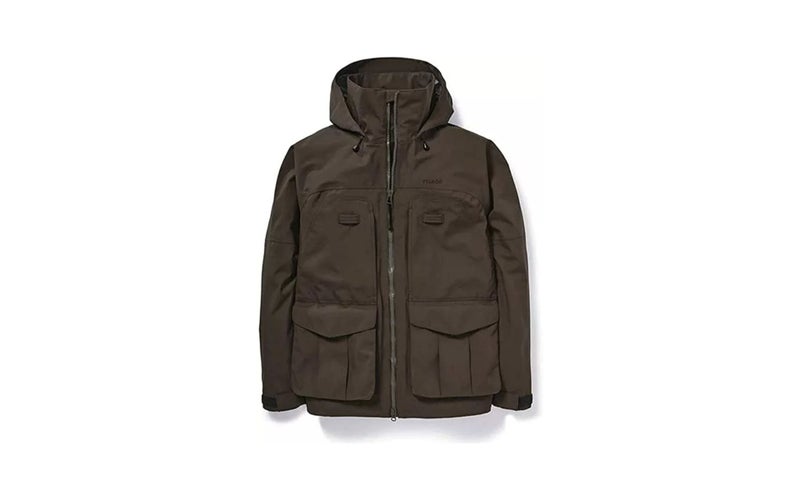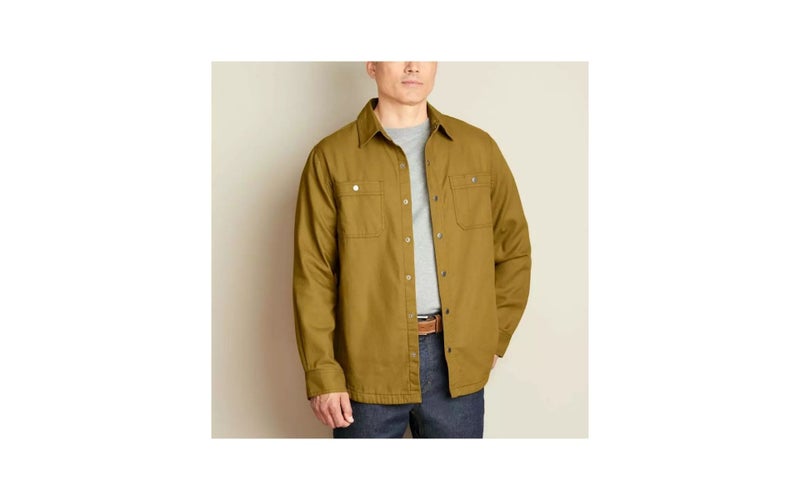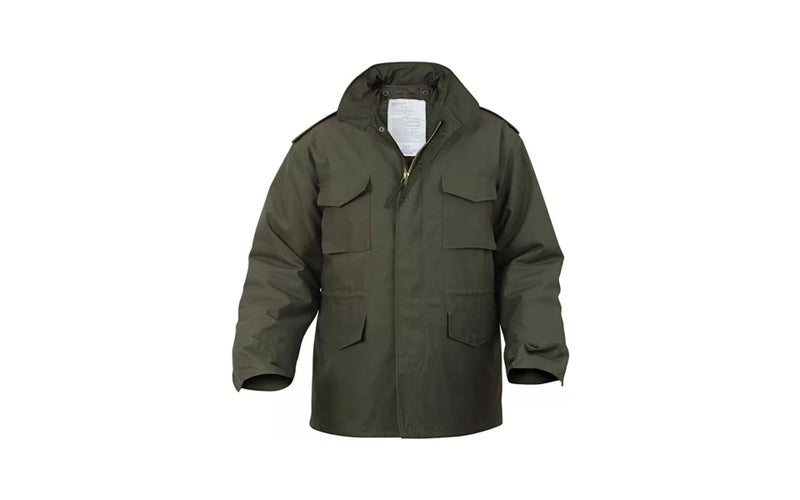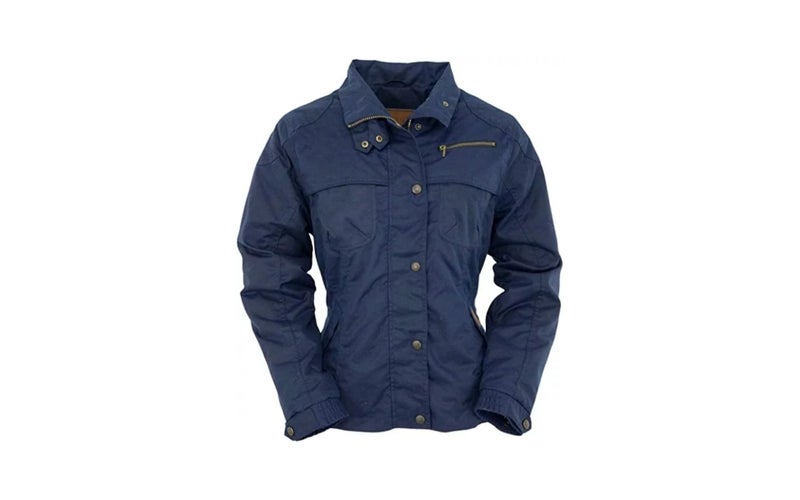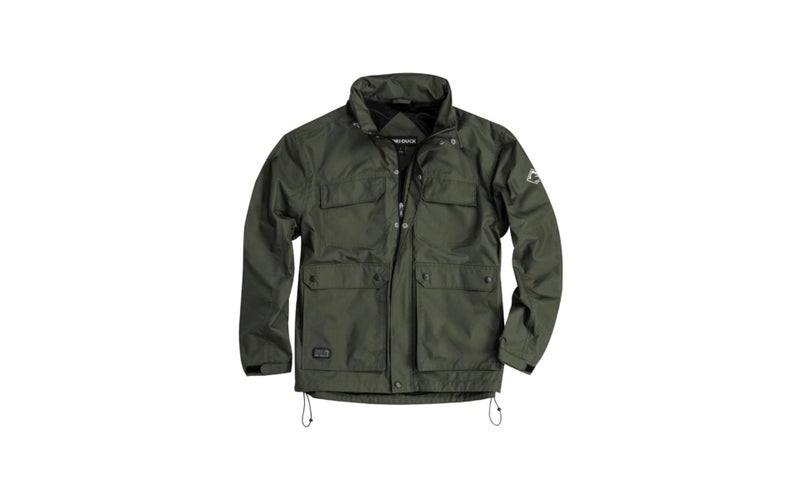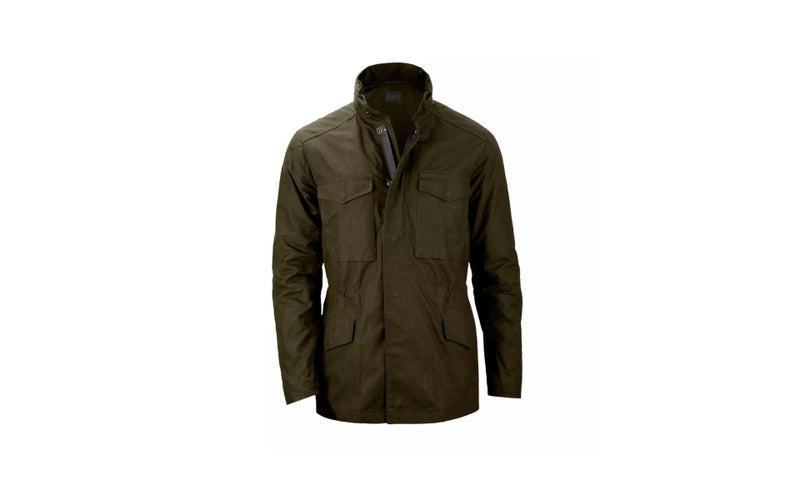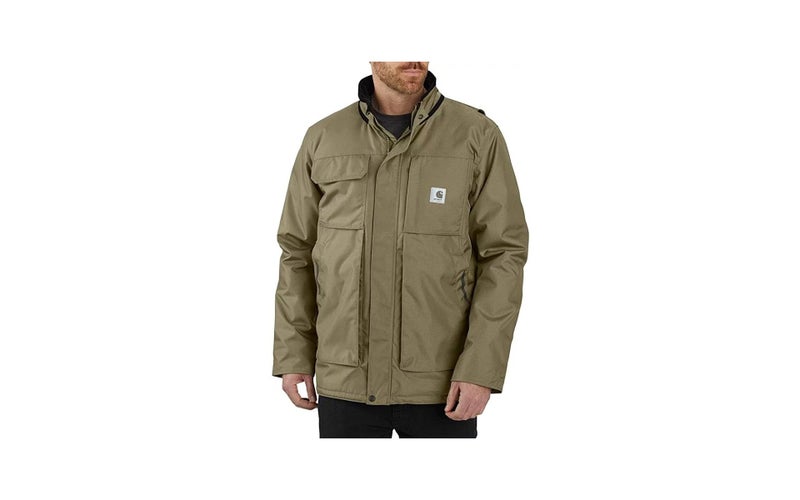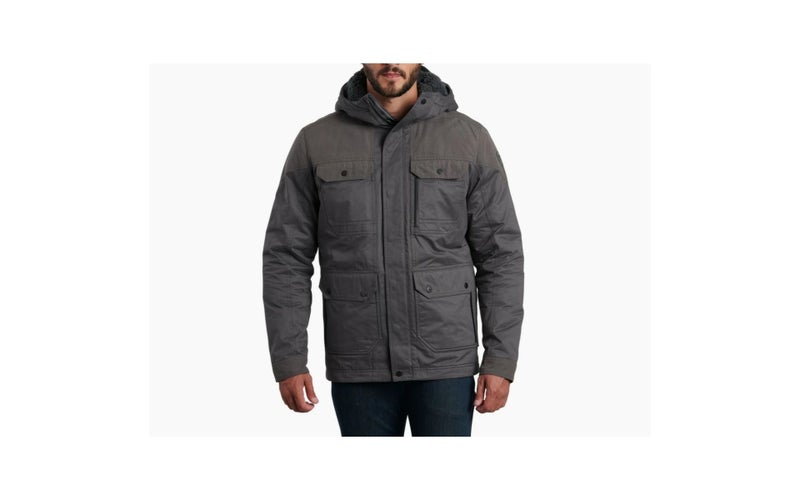We may earn revenue from the products available on this page and participate in affiliate programs.
Few things can surpass the peace of mind that comes with going into the outdoors knowing you have a reliable field jacket.
Originally adopted by the U.S. military in (unsurprisingly) 1965, the M-65 field jacket gained renown and popularity during the Vietnam War, where it was standard issue for service members deployed to Southeast Asia. The impact of the war was viscerally represented to American society by soldiers returning home still clinging to the jacket that protected them from the many elements overseas. Worn by veterans, Rambo, and so many others, the field jacket became an iconic representation of the U.S. military during that chapter of American history, and its cultural footprint remains to this day.
What makes a good field jacket? By historical precedent, a field jacket is a durable, rugged coat that’s loaded with pocket space, all while keeping out most inclement weather. However, in an industry flooded with reproductions, knockoffs, and emulations, not all jackets are created equal. That’s why we’ve taken the time here at Task & Purpose to provide you with a list of some of the best options out there to keep the elements off your back and help you narrow the field down to a few winners so you can buy with confidence. Let’s get to it, shall we?
Methodology
When trying to select our suggestions for this article, I looked at what makes a field jacket great: warmth, durability, and lots of pocket space. Historically, the field jacket was supposed to be something a soldier could wear in the field, pockets stuffed full of extra ammo or rations, and keeping the weather off their back. I stuck with companies who have lived up to that expectation historically and products that fit that design philosophy. I also pored over some of the most popular options, some of the most heavily-advertised results on social media and in Google search results, and weeded through those options that were most obviously cheap knock-offs.
When you’ve spent enough time outdoors and at hard labor, certain design choices and materials stand out as being of lesser quality. Even beyond my own experience in the U.S. Army, I’ve spent years personally buying a wide range of jackets from a variety of manufacturers, and have learned some little tricks to be able to tell how a product will perform over the long term. Little things like how a jacket is cut can tell you how much range of motion you’re going to get, or what materials let in too much water or don’t breathe as well become obvious.
Filson has been providing reliable outdoor clothing since they started outfitting gold prospectors in Washington back in 1897, and everything about the Filson 3-layer Field Jacket shows it. With sensible design choices abounding, this jacket should hold up to just about anything you throw at it.
Pocket space abounds throughout the nylon shell, with large lower pockets that can fit everything from a box of shotgun shells to a small lunchtime meal — complete with grommets for drainage — while the chest pockets are side-accessed to protect whatever may be inside. Uniquely, it also offers a zippered game pocket on the back, which could carry anything from a quail to a small sleeping bag.
The interior of the jacket is a cotton blend that has excellent sweat-wicking properties but is going to be a little less comfortable than most jackets. Luckily, Filson offers a variety of liners, unlike most jackets, and can serve excellently as a layering option or a standalone jacket regardless of the conditions. As superb an outdoor jacket as you’ll find, the biggest gripe is the lack of a neck attachment for the aforementioned liners, which means you may experience some occasional bunching when they’re installed.
- Material: Nylon with waterproof membrane
- Hood: Yes
- Accepts liner: Yes
Superb weather resistance and water resistance
Quality, durable construction
Lightweight material
Excellent field of movement
Tricky sizing
Hood doesn’t stow/remove
Not truly a “field jacket,” the Duluth Flannel-Lined Limber Jac is getting an honorable mention as our value pick because of its fantastic performance for the price. Duluth’s trademark is “Firehose” jackets and pants, essentially it uses woven cotton similar to the heavy-duty weave you see on fire hoses. Take that same blend, add a few pockets, and line it with flannel, and you have a durable, extremely comfortable jacket.
As an extremely no-frills option, it lacks a hood, doesn’t have glove attachments, only uses front snaps rather than a zipper, and the chest pockets are relatively small. But what it does offer is a jacket that just does the job. The aforementioned Firehose exterior is extremely durable and water-resistant. The jacket fits comfortably like a heavyweight flannel, so at no point does it restrict your motion in any way, and the liner is extremely cozy. It even includes a small open-top pocket on the inside, safe from the elements.
The snaps down the chest and at the wrists are well-made and well-attached, so you’ll have no worries about needing to replace them any time soon. It features double stitching throughout the design as well, so separated seams aren’t a worry. Newer versions include a Velcro patch to help close the internal pocket which I am a bit more ambivalent about, but it provides some peace of mind about whatever you stick in there.
- Material: Firehose cotton with flannel lining
- Hood: No
- Accepts liner: No
Decent water resistance
Comfortable flannel lining
Good for casual or work wear
Open-top pockets
Not well sealed against the weather
There are many reproduction M-65 Field Jackets in the world, and they are not created equal. Some of them are wildly expensive (see our tactical entry below), while some are cheaply constructed and won’t last a week. The Rothco reproduction M-65 strikes a fine balance between those two ends of the spectrum.
Rothco as a company has specialized in reproduction military apparel for decades, and its M-65 is a fine demonstration of how valuable those years of experience can be. It has faithfully rebuilt the classic jacket we’re all familiar with, checking all of the boxes of the original military demands. Huge, oversized pockets can fit anything and everything you want in them. A stowable hood folds into a zippered compartment under the collar. The cotton/poly blend is water-resistant, wicking water away in all but the heaviest of downpours. And all done at a reasonable price.
An advantage to the Rothco model is that it’s offered in far more colors than most competitors have. Tigerstripe? They have it. Navy Blue? It’s there. You can even get it in the outdated UCP, if for some reason you temporarily lost your mind. All in the same design, accepting the same quilted liner we all love. The stitching is less durable than some other offerings, so it may not hold up as well as other M-65s (one of the snaps holding a cargo pocket closed tore free on the one I own). The original cotton/poly blend the government requested is also not the best way to keep the weather off your back compared to modern materials. But for the value, it’s hard to beat.
- Material: Water-resistant cotton/poly blend
- Hood: Yes
- Accepts liner: Yes
Classic design aesthetic
Stowable hood
Large, roomy pockets
Wide variety of color options
Less durable stitching
Finding a clothing product for women that is more than a glorified fashion item can be a struggle. Thankfully, some companies still take seriously the legitimate need to provide reliable, hard-working clothes for a female audience, and Outback Trading Co falls into that category. Its Sheila’s Delight jacket is a fantastic option that meets all the expectations of a legitimate field jacket.
Made of oilskin, it’s naturally waterproof and weather-resistant, and the cotton and taffeta lining is both comfortable and extremely warm. It also has more pockets than you can shake a stick at, with an inside pocket, two hip pockets, and a chest pocket, all zippered to keep whatever’s inside, inside.
Add to that the natural toughness of oilskin, the double-stitched design, and the high, buttoned-up collar, and you have a natural choice for the outdoors and the elements. The lack of a hood is a minor drawback, so you’ll need to account for how you’ll keep your head warm and dry, but all in all, it’s a great option.
- Material: Oilskin
- Hood: No
- Accepts liner: No
Excellent water resistance
Zippered pockets
Properly cut for women
No hood
Pricey option
Sometimes the most important feature you need from a jacket is to keep the rain off. Dri Duck’s Field Rain Jacket is exactly what the name says: a field jacket explicitly intended to keep you dry. Starting from the basic M-65 design, they created the most waterproof version they could manage.
With a 100 percent nylon exterior, a stowable hood, and adjustable wrists and hem, it is superbly designed to keep the elements out and your warmth in. It has all the pockets of a typical M-65, though they’re less spacious than some other offerings, and the hood is well-shaped to ensure water runs away from the face, rather than dripping down onto your nose.
It lacks the prototypical attachment points for a liner, so you’ll have to wear some extra layers if you’re dealing with extreme cold, but all in all, Dri Duck has created an excellent jacket for wet weather at a remarkably reasonable price.
- Material: Nylon
- Hood: Yes
- Accepts liner: No
Water- and wind-resistant
Cord cinched at the waist
Tons of pocket space
Stowable hood
Poor ventilation
Less insulated against the cold
Doesn’t take a liner
When you absolutely, positively, have to make sure everyone knows you’re the most operator guy in the room, accept no substitutes. Some people might think that $400 is too much to pay for a modernized M-65 field jacket, and let’s be honest, those people are probably right. But Triple Aught Design has been a manufacturer of fine tactical apparel to some of the best in the business for years, and sometimes you just want to fly close to the sun.
Its M-65 is, stylistically, the same jacket we’re all used to: stowable hood, four pockets up front, button/zipper, and a durable cotton material that holds up to the elements. What sets this aside from other more typical options is a more “modern fit” — it fits a little slimmer than the original, like a modern coat — and high-end construction.
Besides that, it’s also 100 percent cotton, meaning it lacks the natural water resistance that the typical cotton/poly blend jackets have. To make up for this, TAD has treated it with a waterproof spray. This means that, over time, you’ll have to regularly retreat it in order to keep the water resistance in your jacket. But isn’t that a fair price to pay to look cool?
- Material: 100 percent cotton
- Hood: Yes
- Accepts liner: Yes
Superb construction
Very lightweight
Slick, clean aesthetic
Price
Liner sold separately
Needs regular re-waterproofing
Carhartt has a well-known reputation in the industry for its workwear and outdoor apparel, and the Yukon Insulated Coat is no exception. Like other modern versions of the field jacket, it’s made of nylon (the venerable Cordura, in this case), giving it excellent water resistance. It’s also packed full of 3M branded Thinsulate, which gives outrageously good insulation from the cold. That particular combo makes it an excellent choice for snowy conditions, as even melting snow won’t start to chill your bones.
Rather than the collection of deep bucket pockets like other field jackets, the Yukon has a mix of side access and other pockets, totaling four outside and one inside, giving decent but less utilitarian storage space. The collar has snaps for a detachable (but not stowable) hood, and even has some small reflective strips to increase your visibility.
Designed to keep out the harshest of cold, this is truly a winterized version of the field jacket concept, and Carhartt’s ability to make tough, durable clothing is hard to match in the industry. All in all, if you need a field jacket to keep you warm when you’re at work in the worst that winter can throw at you, it’s hard to go wrong with this choice.
- Material: Cordura nylon
- Hood: No
- Accepts liner: No
Heavy-duty 3M insulation
Reflective strips
Wind- and water-proof
Less mobility
No cinches or adjustability
Kuhl is a well-known supplier of winter gear, specializing mostly in ski and snowboard gear and apparel, so when it makes a jacket, you know at the very least it will keep you warm and comfortable. The Kollusion is no exception to this expectation. A snug, stylish, fleece-lined option, it has all the design cues we expect from a field jacket.
With tons of pocket space and fleece lining that even continues to the hood, it’s an excellent jacket for your day-to-day travels through snow and sleet. With a wax coating exterior, water will run right off, and the entire design is slick and fashionable.
The downsides here are that it’s just not suitable for the kind of abuse you expect from a field jacket. It’s much more constrictive than is usually desirable for outdoorsmanship or hard work, and the design, while perfectly reliable, isn’t going to hold up rolling around in the dirt or crawling around in a trench. A cold campfire circle, getting down on the slopes, or walking the streets of a frozen city, however, and this might just be your man.
- Material: Wax-coated cotton-poly blend
- Hood: Yes
- Accepts liner: No
Comfortable fleece lining
Excellent warmth
Lots of pocket space
Less durable against abuse
Subpar range of movement
Our verdict on field jackets
With so many field jackets on the market, it’s easy to get overwhelmed. With the Filson 3-layer, you have a guaranteed lifelong outer layer that works in any situation, and the Duluth Firehose Shirtjac can be your bargain-priced do-anything coat. Go forward and purchase with confidence.
What to consider when buying a field jacket
Types of field jackets
M-65
This is the classic military jacket. These jackets all share the hallmarks of the original design: the stowable hood, large pockets, and a detachable liner for extra warmth in cold conditions. They’re usually a cotton/poly blend for better water resistance and durability, and many are treated for additional waterproofing.
The nice thing about an M-65 is the tried-and-true design. It’s been field-tested to death, so you know it’s going to work when you most need it without fail. Another benefit? The internal liner is just a woobie shaped like a coat, and it’s impossible to be unhappy about that. Everybody loves their woobie.
Hunting jackets
Hunting field jackets tend to deviate a bit from the classic M-65 design philosophy, with synthetic materials or oilskin being more prevalent and hoods being less common, but they keep a lot of the features we love. Lots of large pockets, superb warmth, and excellent weather resistance are all hallmarks.
Another difference is the fit — where the classic design is deliberately oversized and baggy, hunting jackets tend to be a little more form-fitting and snug. This helps avoid snagging on branches and underbrush as you move through the woods, but a good hunting jacket achieves this without sacrificing freedom of movement.
Workwear
Many workwear companies have their own field jacket style designs, but they can be a stark departure from the original design. As with hunting jackets, hoods are less common, and they often lack the abundant storage space as other options (the expectation being that you probably have a toolbag handy).
What they do give you is superb durability, high-quality construction, and — with the best workwear — excellent range of motion.
Key features of field jackets
Weather resistance
The most important feature of a good field jacket is that it’s going to keep the weather off your back. As implied by the name, it’s something you’re going to be using when you’re out in the field, so you want something that’s going to keep you warm and dry. Whether it’s hiking through the mountains, camping with your friends, or on a hunting excursion, you need to feel confident that rain, wind, and nature aren’t going to ruin the trip.
Durability
A good field jacket is also going to be holding up to whatever you’re doing. It should be able to resist abrasion, the elements, even light punctures if it’s well-constructed. Think of the original use of the field jacket — crawling around in the dirt, throwing yourself on the ground to avoid incoming fire, and combat wear and tear — and you get the idea.
Storage
Another vestige of the original, militant purpose of the field jacket is an emphasis on storage. The original M-65 jackets were designed to be oversized with huge pockets, allowing troops to stuff whatever ammo, medical supplies, and rations they might need on a patrol or extended field exercise without impeding their movement and mobility. A good field jacket should do the same for you, whatever you’re using it for.
Field jacket pricing
Like most quality, purpose-built jackets, they can run a little pricier than your average raincoat. A decent field jacket is going to run you a few hundred dollars. If you’re going to use it for a highly specialized purpose, or you’re going for exceptionally high quality, that price can quickly balloon.
Budget
For under $100, you’re typically going to see knock-off “fashion” designs that have the look, but none of the functionality.
Mid-range
Between $100 and $300, you’re usually looking at a reliable jacket that’s made out of quality materials. However, it may not hold up as well over the long term and may only be useful in a handful of environments.
Premium
Over $300, and you’ve likely got yourself something that will last you a lifetime with proper care and maintenance.
FAQs on field jackets
You’ve got questions. Task & Purpose has answers
Q: How warm are field jackets?
A: A good field jacket will keep you warm in all but the most extreme climates. Think of an average winter night in the Midwest and you’ve got the right idea.
Q: Are field jackets fashionable for men?
A: Absolutely. After hundreds of thousands of veterans brought them home from various wars, they have become fashion icons in their own right, and dozens of fashion companies make their own version.
Q: What is the current U.S. Army field jacket?
A: Tragically, the U.S. Army has moved on from field jackets and instead issues a multi-level cold-weather system consisting of a Gore-Tex shell, soft underlayer, and other layering options.
Q: What should I wear under a field jacket?
A: The best field jackets include the ubiquitous field jacket liner, a quilted insert that buttons to the inside of your field jacket to provide better insulation and comfort, and even better, feel just like your woobie.
